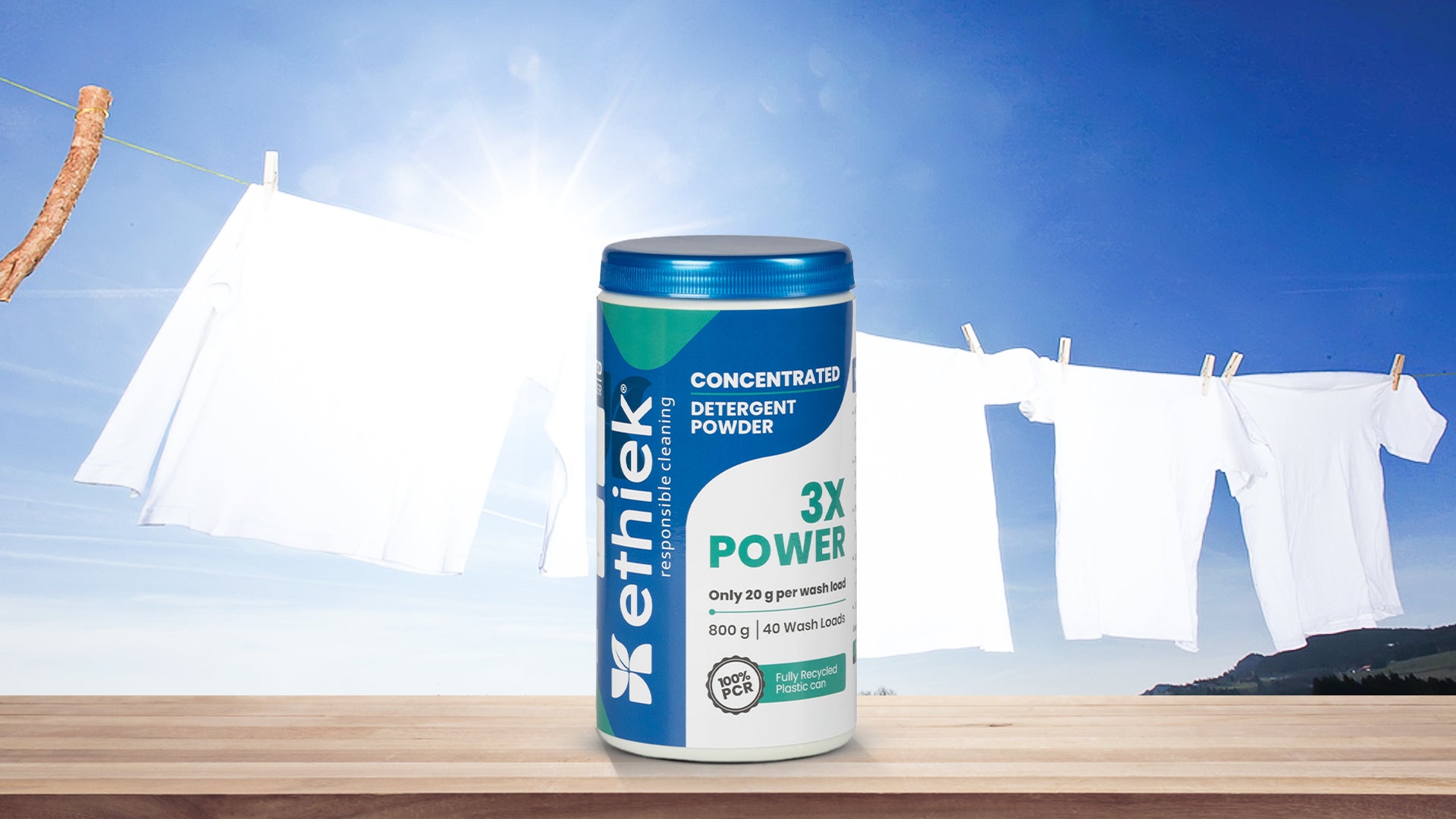In today's world, we are all the more conscious of the impact our choices have on the environment. This extends to the products we use in our homes, including laundry detergent. Gone are the days when laundry detergent meant harsh chemicals and questionable ingredients. Today, families are increasingly seeking out natural and eco-friendly options that are gentle on both clothes and the planet too. But with so many choices available, it can be tough to know where to start.
That's where Ethiek comes in. Ethiek's sustainable detergent products range is committed to providing families with safe, effective, and sustainable cleaning solutions while still giving effective cleaning results. Their detergents and conditioners are made with natural ingredients that are safe yet very effective.
What makes Ethiek different?
Ethiek stands out for several reasons:
- Ethiek is your eco-conscious laundry partner, teaming up with eco-cleaning pioneers in the US and UK, bringing 50 years of expertise to India.
- Our detergent powder’s concentrated formula uses 1/3rd less powder, saving you money and reducing waste. No bulky containers, no overflowing scoops Our power packed solution works best on food, ink and other common stains.
- Our Concentrated detergent liquid is perfect for your less soiled clothes. Its quick rinse technology doesn't leave any residue and you get clean garments in 20 mins (quick wash mode on machine) saving you water as well as electricity.
- Tested and approved products:- Ethiek's eco-friendly solutions are clinically tested, verified by certified labs, and approved by over 2000 customers. Ethiek removes tough stains while being gentle on the environment.
- Ethiek's packaging is made from 100% Post-consumer recycled (PCR) Plastic, giving existing plastic a new life.
- Embrace natural goodness with Ethiek:- Our products use non-toxic and /organic ingredients, free from harsh chemicals like phosphates, sulphates, phthalates, and parabens. It's gentle on your skin, your clothes, and the Earth too.
- Safety for everyone is our priority:- Ethiek's formulas are proven safe for sensitive skin, babies, and pets. They're allergen-free, making them ideal for the whole family.
- Versatility is key – Ethiek's products are effective for all types of washing machines and methods. Whether you have a top-load, front-load, or hand-wash routine, we've got you covered. Our liquid detergent is perfect for quick wash, saving you time and energy.
So, ditch the harsh chemicals and embrace the Ethiek difference. It's good for your clothes, good for your skin, and good for the planet.
The benefits of using Ethiek laundry detergent
There are many benefits to switching to Ethiek laundry detergent. Here are just a few:
- Gentler on your skin and the environment: Ethiek's natural ingredients are less likely to irritate your skin or harm the environment.
- More effective cleaning: Ethiek's concentrated formula is tough on dirt and stains, even in cold water.
- Supports a sustainable future: By choosing Ethiek, you're supporting a company that is committed to making a positive impact on the world.
Making the switch to Ethiek
If you're looking for a safe, effective, and sustainable laundry detergent option for your family, Ethiek is a great choice. Our products are available online on www.ethiek.in and Amazon, Flipkart and Jio Mart.
FAQs
Q: Is Ethiek Laundry detergent effective?
A: Yes, Ethiek laundry detergent is effective at cleaning even the toughest stains. Their concentrated formula is tough on dirt and grime, even in cold water. Its Concentrated Detergent Powder works very well on white clothes, reducing the need for separately scrubbing the cuff and collar in white shirts.
Q: Is Ethiek laundry detergent safe for sensitive skin?
A: Yes, Ethiek laundry detergent is free from harsh chemicals, making it ideal for people with sensitive skin or allergies.
Q: Where can I buy Ethiek laundry detergent?
A: You can purchase Ethiek laundry detergent online at our website www.ethiek.in , Amazon, Flipkart and Jio Mart.








15 comments
* * * <a href="http://shubhknk.com/?lgb4b1">Claim Free iPhone 16</a> * * * hs=e8ad9c05deb2bf5a16dc569e8688d5c2*
bxswfz
* * * Unlock Free Spins Today: http://shubhknk.com/?lgb4b1 * * * hs=e8ad9c05deb2bf5a16dc569e8688d5c2*
nxwki9
🔧 Reminder: Transaction №OZ69. VERIFY > https://telegra.ph/Binance-Support-02-18?hs=e8ad9c05deb2bf5a16dc569e8688d5c2& 🔧
hks0c7
📓 Email- Operation #NH62. ASSURE >>> https://telegra.ph/Binance-Support-02-18?hs=e8ad9c05deb2bf5a16dc569e8688d5c2& 📓
v2fbkb
📋 You have received a message # 512438. Open >>> https://telegra.ph/Binance-Support-02-18?hs=e8ad9c05deb2bf5a16dc569e8688d5c2& 📋
dcoalr
Leave a comment
This site is protected by hCaptcha and the hCaptcha Privacy Policy and Terms of Service apply.